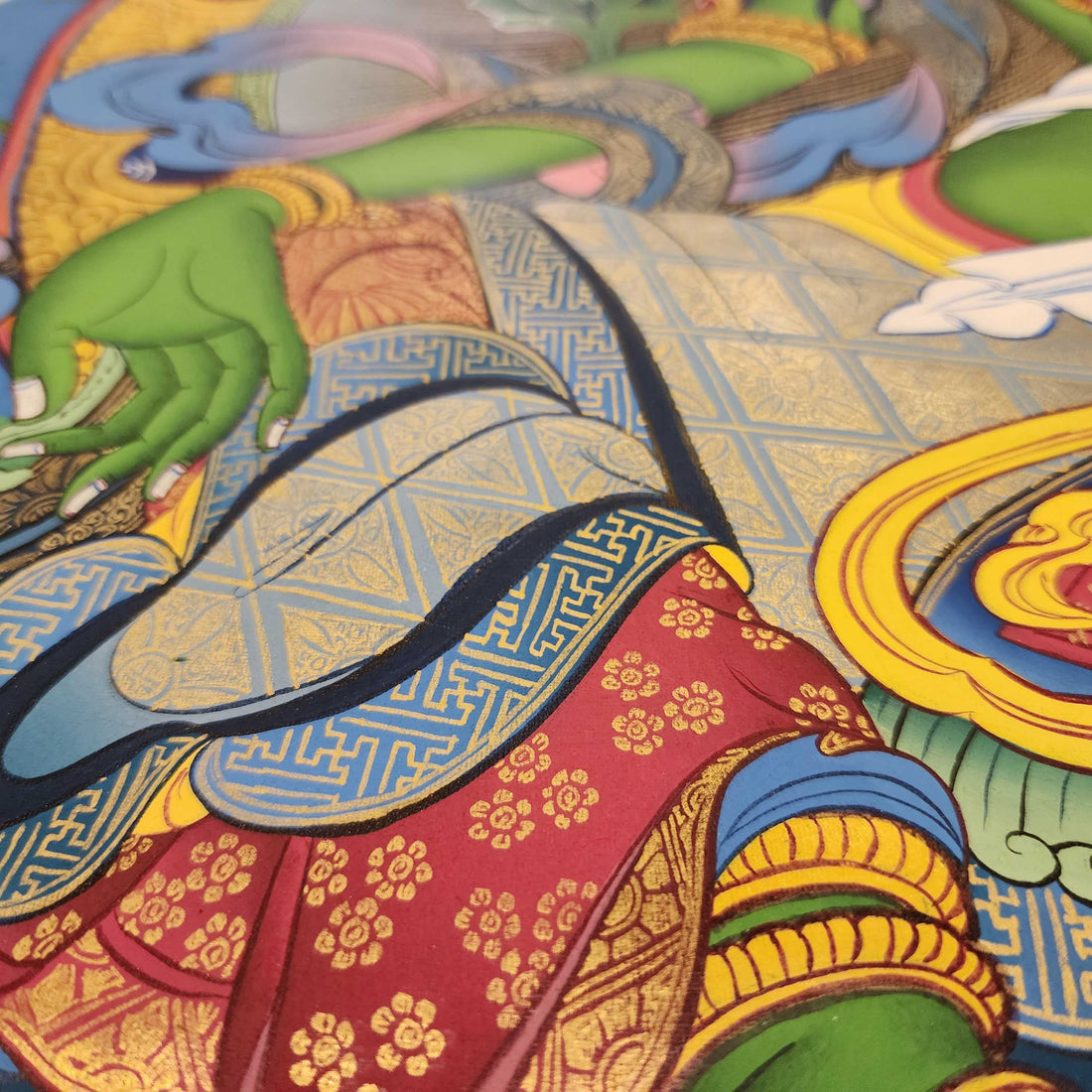
The Blessing Ritual of Thangka Consecration: Infusing Sacred Energy
Share
Introduction
A Thangka painting is considered a sacred object, but its spiritual power is fully awakened only through a consecration ceremony. This ritual transforms the artwork from a visual representation into a vessel of blessings.
Purpose of Consecration
— Consecration invites the presence of enlightened beings into the artwork.
— It ensures the Thangka becomes an object of merit, meditation, and devotion.
Who Performs the Ritual
— Typically conducted by high lamas or Buddhist monks trained in sacred rituals.
—Involves prayers, mantras, and empowerment ceremonies.
Steps in the Ceremony
— Purification: Ritual cleansing with incense, water, or mantras.
— Invocation: Calling upon deities represented in the Thangka.
— Empowerment: Chanting mantras and blessing with sacred objects, such as vajras and bells.
— Sealing the Blessings: Applying sacred syllables or mantras on the back of the painting.
Spiritual Benefits
— A consecrated Thangka is believed to radiate blessings to the home or temple.
— It supports meditation, healing, and spiritual growth.
Conclusion
Consecration elevates a Thangka from beautiful artwork to a sacred tool of enlightenment. Owning a blessed Thangka brings both spiritual and cultural value.
